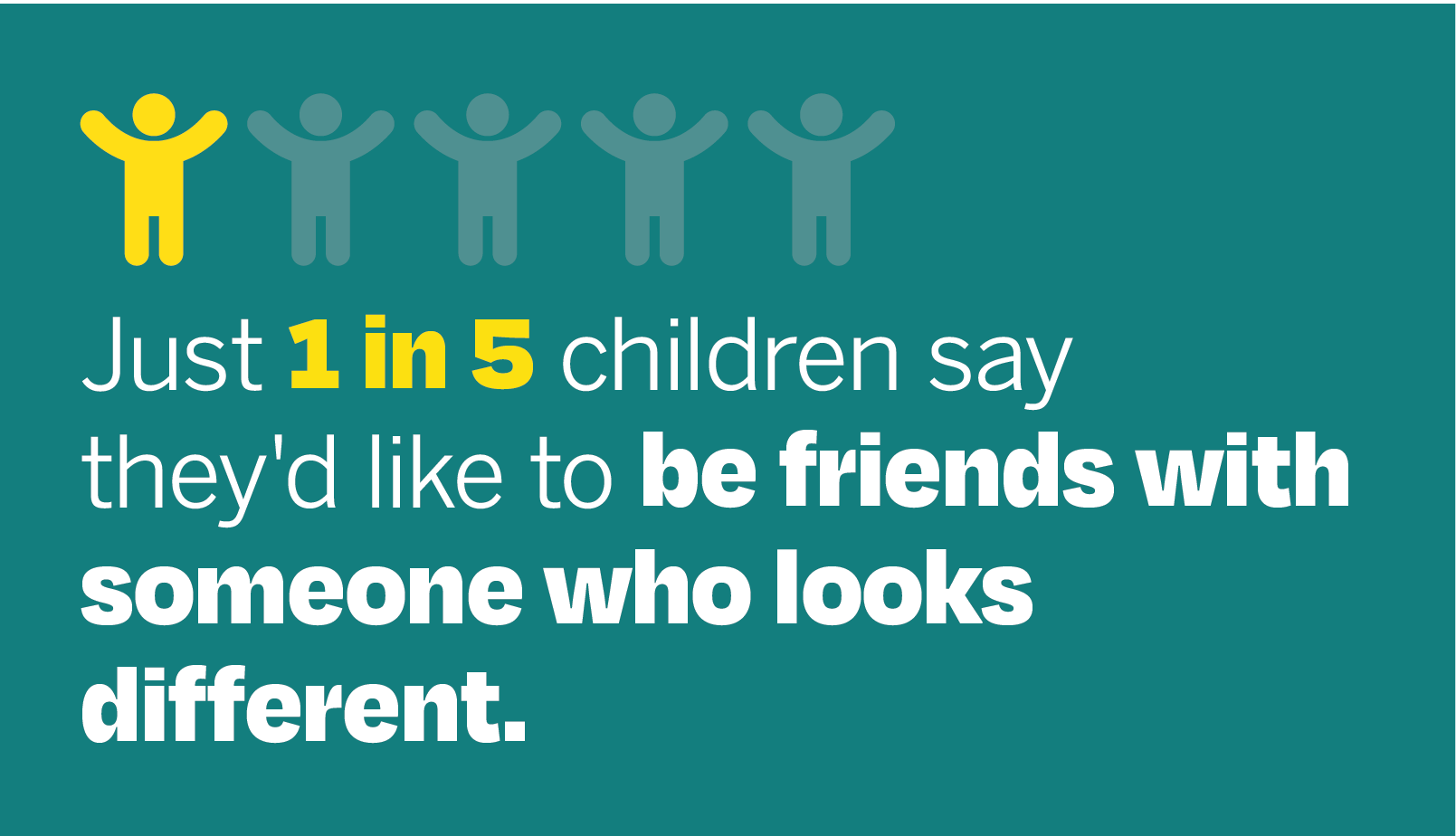
This month we’re highlighting the experiences of children with a visible difference in education. We want every child to be free from bullying and isolation and to reach their potential.
The reality for young people
New research commissioned by Changing Faces and undertaken by Childwise this Summer shows the scale of the challenge:
- 42% of children with a visible difference say they feel left out or don’t belong.
- They are twice as likely to be bullied compared to their peers.
- Only 1 in 5 children (20%) say they’d like to be friends with someone who looks different.
- Because of those experiences, nearly 1 in 4 (23%) children with a visible difference report being unhappy – almost double the rate of other children (11%).
These figures paint a stark picture of exclusion, stigma, and isolation in schools. And behind every statistic is a child, like Isla, simply wanting to feel accepted.

Isla’s exclusion from key school events left her parents feeling as though she had been erased
It doesn’t have to be this way
Every child deserves to feel safe, included, and confident in who they are. When teachers and schools are given the right tools, children with visible differences thrive – and the whole school community benefits.
That’s why we’re calling for urgent action to close the gap between the Government’s ambitions for inclusive education and the reality facing young people with a visible difference today.
Because of their experiences of isolation, bullying and exclusions, children with visible differences are at increased risk of low self-esteem, anxiety, and social withdrawal. But that’s not inevitable. When children are supported, they thrive. We’re here to help.
What needs to change
- We want our research to influence the way schools meet their existing obligations on equality, safeguarding, mental health, and PSHE delivery in the interest of children and young people with a visible difference.
- Teachers tell us that they welcome further support, and we’re here to support them. We’re promoting our quality assured, age appropriate resources to schools to that visible difference is embedded in materials that promote understanding and acceptance.
- Given the higher incidence of bullying and isolation – which we know can contribute to lower educational attainment – we are calling for further research to assess our concern that the experience of having a visible difference may contribute to lower educational attainment, and thereby life prospects, as well as the true extent of the issue.
- Finally, we’re calling for greater investment in anti-bullying and wellbeing support for children experiencing appearance-related discrimination or isolation and reporting on such incidents.
What you can do
Change also starts in our homes, classrooms, and communities. We’re urging families, youth groups, and education leaders to start conversations about difference, kindness, and inclusion – helping young people build empathy and confidence when relating to others.
Free resources for schools
We’ve created free, age-appropriate, and quality-assured resources to support teachers and pupils, including:
- Guidance, training, and CPD for staff
- Practical advice on supporting pupils with a visible difference
- Lesson plans, classroom activities, and assembly resources
These resources make it easier to:
- Help every child with a visible difference feel seen, supported, and included
- Build respectful and inclusive classrooms – benefitting all pupils
- Meet equality, safeguarding, mental health, and curriculum requirements
Download our free resources for schools
How you can help
Together, we can create schools where no child feels left out for looking different. Here’s how you can get involved:
- Share our campaign on social media to raise awareness.
- Donate today to fund vital support services for children and families.
- Stand with young people living with a visible difference – and help us build classrooms where everyone belongs.
Need support?
If you’d like to speak to a member of the Changing Faces team, we’re here for you.
